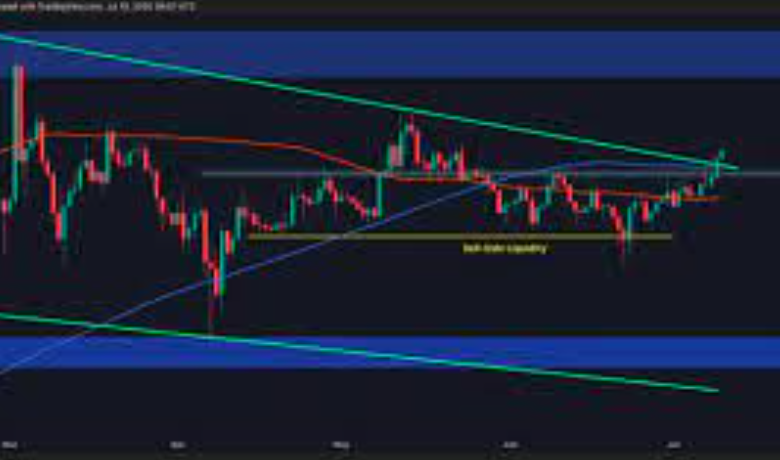How to Analyze XRP Price USD Using Technical Indicators

The world of cryptocurrency has brought with it various opportunities for traders and investors. Among the many digital assets available for trading, XRP (also known as Ripple) has consistently been one of the most prominent and widely traded. However, navigating the volatile market of XRP can be challenging. That’s where technical indicators come in handy. Understanding how to analyze the xrp price usdt (or XRP price USDT) using technical indicators can make a significant difference in your trading strategy.
In this article, we will delve into the process of analyzing XRP price USD, breaking down technical indicators, chart patterns, and trends that will empower you to make informed decisions in your trading journey.
1. Introduction to XRP and its Market
XRP, created by Ripple Labs, is a digital currency designed to facilitate fast and cost-effective cross-border transactions. Unlike Bitcoin, which relies on mining for validation, XRP uses a consensus algorithm, making it more energy-efficient. Due to its utility in the financial sector, XRP has gained widespread adoption.
The XRP price USD fluctuates based on various factors including market demand, partnerships, global regulations, and the overall cryptocurrency market conditions. Analyzing these price fluctuations is crucial for anyone looking to profit from XRP trading.
2. What are Technical Indicators?
Technical indicators are mathematical calculations based on a security’s historical price and volume data. Traders use these indicators to forecast future price movements and make more informed decisions. These indicators help to identify trends, potential reversal points, and other market signals.
In the context of XRP price USD, technical indicators are particularly useful in predicting short-term and long-term price trends. By applying these indicators to XRP charts, traders can make better entry and exit decisions.
3. Understanding XRP Price USD and XRP Price USDT
XRP price USD refers to the value of XRP relative to the US dollar. On the other hand, XRP price USDT reflects the value of XRP in terms of Tether (USDT), a stablecoin pegged to the US dollar. Although the two are closely related, XRP price USD is typically more volatile due to the fluctuating nature of cryptocurrency markets.
4. The Importance of Technical Analysis for XRP Traders
Technical analysis (TA) involves evaluating a cryptocurrency’s price chart and applying technical indicators to predict its future price movements. For XRP, which can experience sudden spikes or drops, relying on TA helps traders identify trends and key levels of support and resistance.
Technical analysis gives traders an edge by allowing them to base their decisions on statistical data, rather than speculation or emotions.
5. Key Technical Indicators for Analyzing XRP Price
To successfully analyze XRP price USD, you’ll need to familiarize yourself with several technical indicators. These indicators help predict price movements based on historical trends. Let’s look at the most popular technical indicators used by traders to analyze XRP.
Moving Averages (MA)
Moving averages smooth out price data to help identify the direction of the trend. The two most commonly used types of moving averages are:
- Simple Moving Average (SMA): A basic average of the price over a specific period.
- Exponential Moving Average (EMA): Places more weight on recent prices and is more responsive to price changes.
By using these moving averages, traders can spot whether the XRP price is in an uptrend or downtrend.
Relative Strength Index (RSI)
The RSI is a momentum oscillator that measures the speed and change of price movements. It ranges from 0 to 100 and helps traders assess whether an asset is overbought or oversold. An RSI above 70 signals that XRP may be overbought and could experience a correction, while an RSI below 30 suggests that XRP may be oversold and a price reversal is possible.
Bollinger Bands
Bollinger Bands consist of a moving average (usually the 20-day SMA) along with two standard deviation lines (upper and lower bands). These bands help traders assess volatility. When XRP price moves closer to the upper band, it suggests overbought conditions, and when it moves closer to the lower band, it signals oversold conditions. A squeeze in the bands indicates reduced volatility and potential for a breakout.
MACD (Moving Average Convergence Divergence)
The MACD is a trend-following momentum indicator that helps identify the direction and strength of a trend. It consists of two lines: the MACD line and the signal line. When the MACD crosses above the signal line, it’s considered a bullish signal, while a cross below the signal line indicates a bearish trend. The MACD is essential for spotting potential trend reversals in XRP price movements.
Fibonacci Retracement
The Fibonacci retracement tool helps traders identify potential support and resistance levels. By plotting key Fibonacci levels on the price chart, traders can predict price pullbacks and possible reversal points. These levels are derived from the Fibonacci sequence and include 23.6%, 38.2%, 50%, 61.8%, and 78.6%.
Volume Indicators
Volume analysis is a critical aspect of technical analysis. By assessing trading volume alongside price movement, traders can confirm the strength of a trend. If XRP price moves up with high volume, it suggests strong buying interest, while low volume can indicate weakness or a potential reversal.
6. How to Use Moving Averages to Analyze XRP Price
Moving averages help smooth out short-term price fluctuations and make long-term trends clearer. For example, if the XRP price USD is above the 50-day moving average, it may indicate that the market is in an uptrend. Conversely, if the price is below the moving average, it could signal a downtrend.
7. Using RSI for Overbought and Oversold Conditions in XRP
The RSI is an excellent tool to detect whether XRP is overbought or oversold. If the RSI is above 70, it suggests that XRP might be overbought, and a correction could occur soon. On the other hand, if the RSI is below 30, XRP may be oversold, signaling a potential buying opportunity.
8. Bollinger Bands: Volatility and Price Predictions for XRP
The Bollinger Bands can provide key insights into XRP’s volatility. When the bands tighten, it indicates that the market is in a consolidation phase, and a breakout may be imminent. Monitoring the squeeze in Bollinger Bands can help you anticipate significant price movements in XRP.
9. MACD: Identifying Trend Reversals in XRP Price
The MACD is particularly useful for identifying potential trend reversals. When the MACD crosses the signal line from below, it indicates a bullish reversal, while a cross from above signals a bearish reversal. This is vital for traders who want to catch major moves in the XRP price USD.
10. Fibonacci Retracement: Finding Support and Resistance Levels in XRP
The Fibonacci retracement tool helps traders identify key support and resistance levels. By plotting the retracement levels, you can pinpoint where XRP might pull back before continuing its trend.
11. Volume Indicators: Confirming Price Movements of XRP
Volume indicators can help confirm price trends. For example, if XRP’s price rises with an increase in volume, it signals strong bullish momentum. Conversely, if the price rises with decreasing volume, it might indicate a weakening trend.
12. Chart Patterns to Watch for XRP Price USD
Certain chart patterns are crucial for predicting future price movements. Popular patterns to watch include head and shoulders, double tops, and triangles. These patterns can indicate trend reversals or continuation patterns, making them valuable for XRP price USD analysis.
13. The Role of Market Sentiment in XRP Price Prediction
Market sentiment plays a significant role in price prediction. Sentiment indicators, such as news, social media trends, and general market outlook, can influence XRP price USD. Positive news may lead to a price surge, while negative news could drive prices down.
14. Combining Technical Indicators for More Accurate Predictions
To improve your analysis of XRP price USDT, it’s often beneficial to combine multiple technical indicators. For example, if RSI is indicating an overbought condition and the MACD is crossing down, this can provide a stronger sell signal.
15. Common Mistakes in Technical Analysis of XRP Price
Some common mistakes include overreliance on a single indicator, ignoring market fundamentals, and failure to manage risk properly. Ensuring a balanced approach can improve the effectiveness of technical analysis.
16. Conclusion
Analyzing XRP price USD using technical indicators is a crucial skill for anyone looking to trade or invest in this popular cryptocurrency. By understanding and applying tools like moving averages, RSI, MACD, and Fibonacci retracements, traders can make more informed decisions and increase their chances of success.
17. FAQs
Q1: What is the best technical indicator for analyzing XRP price?
A1: There is no single “best” indicator. A combination of moving averages, RSI, MACD, and Fibonacci retracement often provides the most reliable signals.
Q2: What is the difference between XRP price USD and XRP price USDT?
A2: XRP price USD is the value of XRP in US dollars, while XRP price USDT refers to the value of XRP in Tether (USDT), which is pegged to the dollar.
Q3: Can technical analysis predict XRP’s price with certainty?
A3: No, technical analysis cannot guarantee future prices. It provides insights based on historical data, but market conditions can change unexpectedly.
Q4: How does volume analysis help in XRP price prediction?
A4: Volume analysis helps confirm the strength of a trend. High volume during price increases suggests strong buying interest, while low volume may indicate a lack of conviction.
Q5: Should I always follow technical indicators when trading XRP?
A5: Technical indicators are useful tools, but they should be used in conjunction with fundamental analysis and market sentiment for the best results.
Q6: How often should I check technical indicators when analyzing XRP?
A6: It depends on your trading style. Day traders often check indicators more frequently, while long-term traders might check them weekly or monthly.





